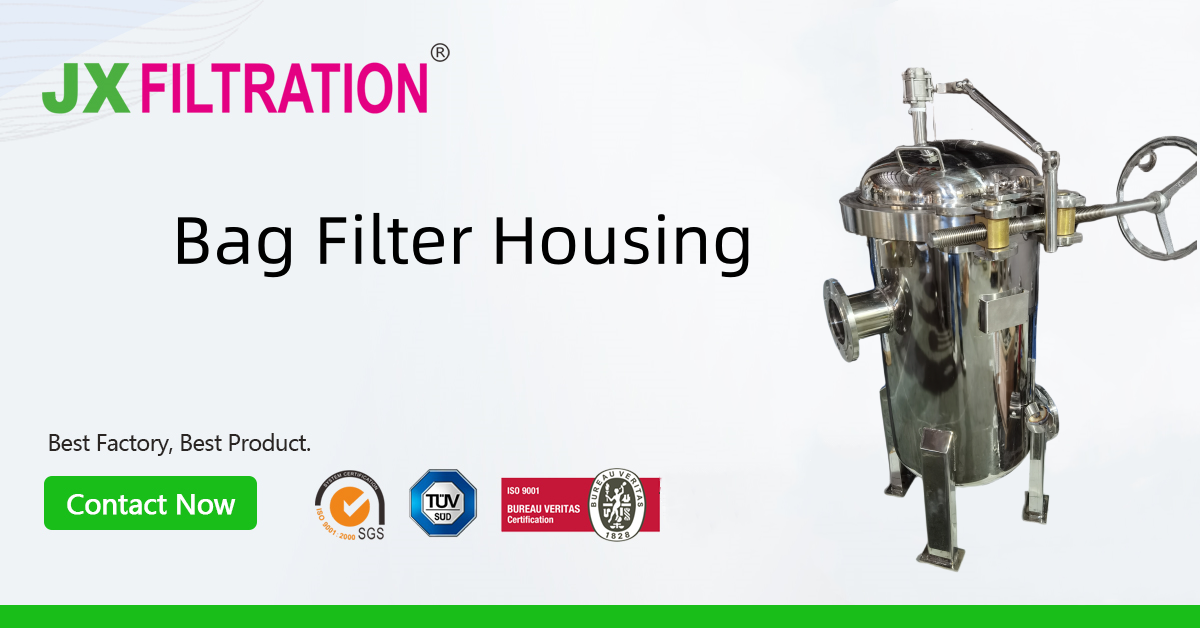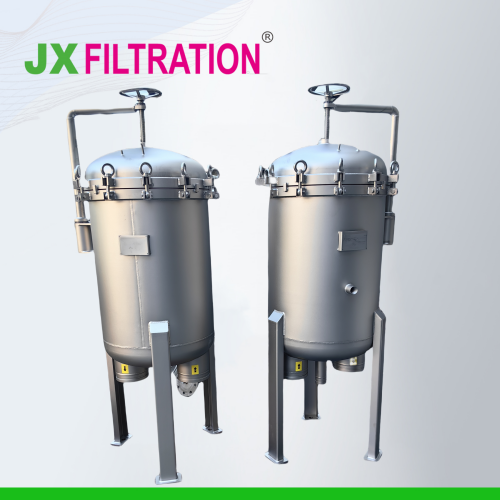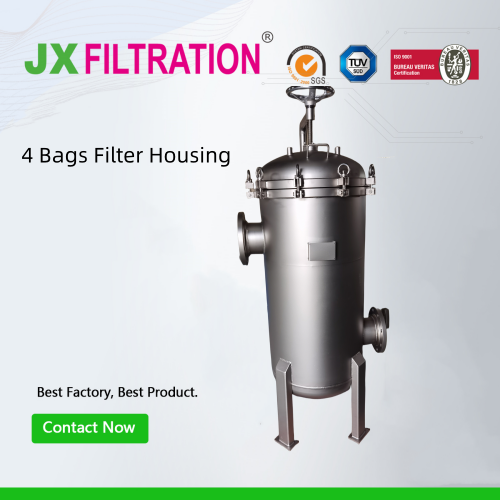How to Properly Use a Bag Filter
Replacing the Filter Bag:

-
High-efficiency filter bags are made from fine fibers that are generally hydrophobic, meaning they repel water and do not get wet easily. Therefore, like other filter elements made from similar materials, they need to be wetted with a liquid of lower surface tension before use. Be sure to soak the filter bag in a pre-wetting liquid compatible with the filtration liquid for a few minutes before installation.
-
Carefully open the top cover of the bag filter.
-
Secure the cover and carefully remove the used filter bag.
-
Insert a new filter bag, following the installation process.
Monitoring Filtration Quality
When the input pressure of the liquid is stable, the filtration quality is closely related to the pressure differential across the filter bag. If the pressure differential is too high, it indicates that the filter bag’s pores are clogged, reducing filtration speed. We recommend checking the pressure differential regularly after the bag filter starts working. The differential pressure between the inlet and outlet gauges will help determine the right time to replace the filter bag. Typically, the filter bag can withstand a pressure differential of around 0.5-1 kg/cm² (0.05-0.1 MPa). When the pressure differential reaches this range, replace the filter bag promptly to prevent rupture and maintain filtration quality. If the pressure differential suddenly drops, stop filtration immediately and check for leaks.
Pressurized Draining of Residual Liquid
For high-viscosity liquids, compressed air can be introduced through the vent valve to accelerate residual liquid discharge and reduce waiting time.
Note: Ensure that the compressed air used for pressurized draining is stable, and its pressure does not exceed the working pressure of the filter.
Procedure:
-
Close the inlet valve.
-
Open the air intake valve.
-
Allow compressed air to enter the bag filter, pressurizing and discharging the residual liquid.
-
Check the outlet pressure gauge to confirm that the gauge pressure matches the compressed air pressure; ensure no liquid flows from the outlet.
-
Close the air intake valve.
-
Slowly open the vent valve; any residual liquid from the vent valve should be directed to a safe location or to the filter’s suction inlet.
-
Once the compressed air is fully discharged, close the vent valve. The filter can then be opened safely, as there will be no internal pressure.
Any Requirements, Contact Us Now!
Kris
Email/Teams: kris@filtrationchina.com
Mobile/Whatsapp/Wechat: +86 18980776200


